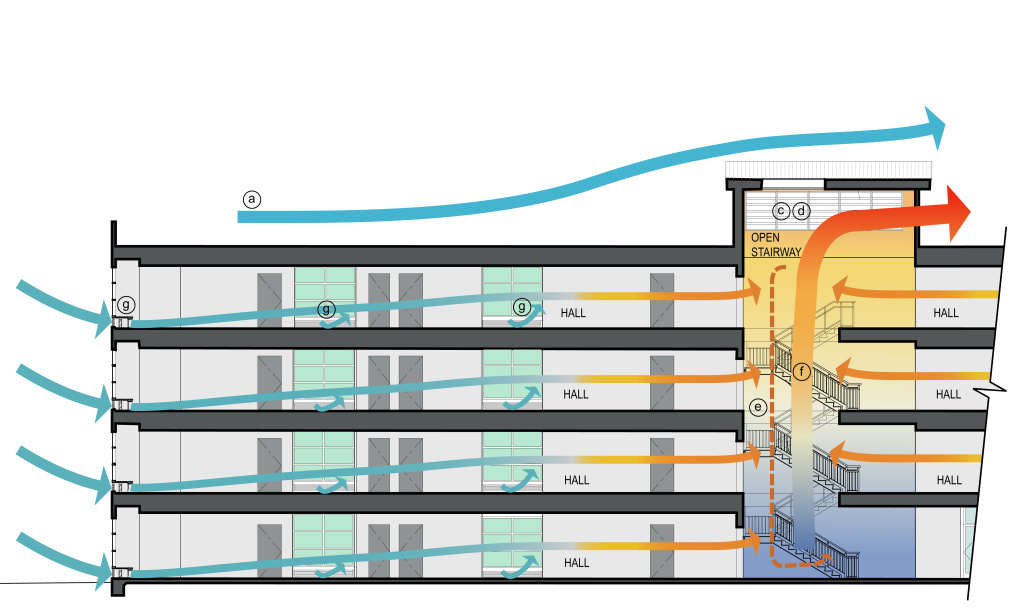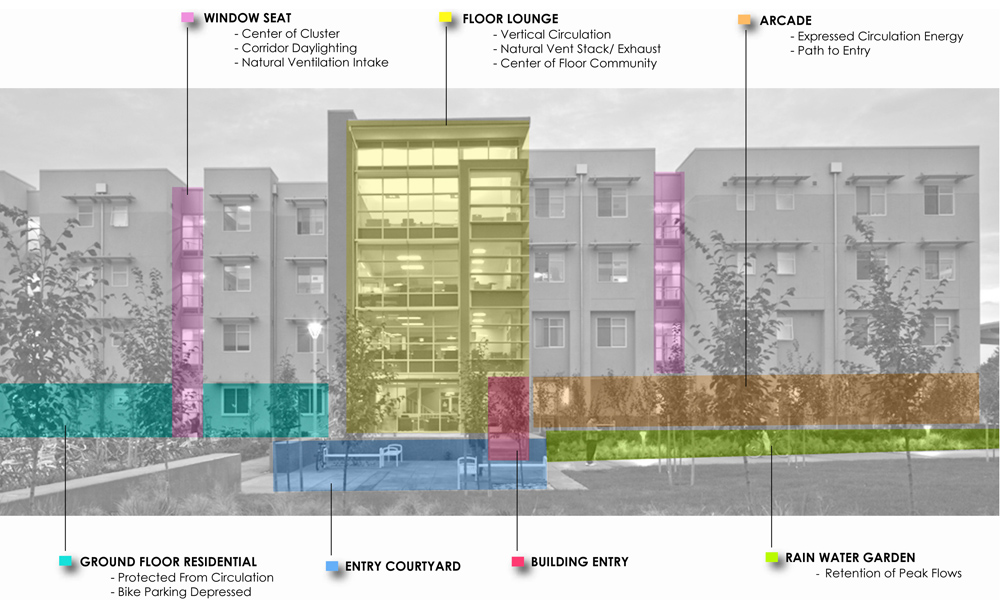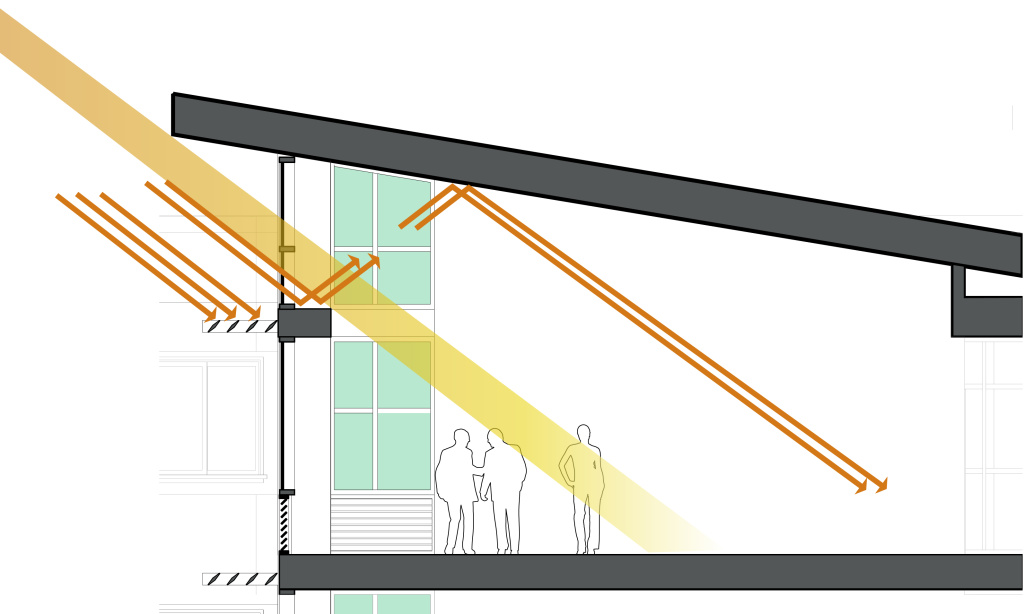Solar chimneys in 2000 year old structures throughout the Middle East served as a historical precedent for a natural ventilation system to cool the UC Davis Tercero Student Housing project. Utilizing the cool evening Delta breeze is a common practice for nighttime cooling in the Sacramento Valley. The system is automated for public spaces and allows for occupant control within individual bedrooms.

The Central Stair is a continuous four story volume open to each floor based on a new provision in the California Building Code. This provided a “thermal chimney” that promotes natural ventilation through the stratification of the air. The hot air rises to the operable louvers that exhaust the extra heat at the top of the stairs. Cool exterior air is introduced through motorized louvers located at multiple window seats throughout the hallway on every floor. The system is controlled through the building’s energy management system which monitors interior and exterior temperatures, triggering louvers and large fans to assist in what is essentially a building-wide natural ventilation economizer cycle.

The geometry of the natural ventilation scheme coincided with the creation of community spaces and led to an elegant system using passive and active elements that allow the building to breathe. The use of daylighting in these spaces further reduces the energy footprint of the building and enhances the students’ occupant experience.

– Craig


Craig,
I will be interested in seeing some metrics on the system. Davis gets very humid in the summer so the hot, humid air coming in through the vents, carry uncomfortable hot, humid air into the building. Where can I find the metrics?
Jim Miller
Hello,
I found the natural ventilation strategy used very interesting. I was wondering though what is the length of the hall as shown on the elevation in the first figure? Does this strategy provide passive cooling in summer?
The hallways in the three buildings serve up to 30 student rooms. The overall hallway length is approximately 250′, but at any point along the hallway you are within 30′ of a fresh air intake louver. The system is controlled through the building’s energy management system. The system provides natural passive cooling through the operable louvers in the hall, utilizing the stack effect of the four story central stair tower with operable louvers at the top. When detecting an outside air temperature lower than the requested indoor cooling temperature, the louvers open. The system becomes “active” with fans at the top of the stair assist the air movement when set points are reached, calling for a quicker cool down.
Your explanation is the same as you described to us on the day of our tour of the student housing at UCD.
It is (somewhat) a technique we used 80 years ago in our home at the south end of the very hot summer San Joaquin Valley. Afternoon temps frequently reached 110 degrees – with humidity hanging around 6 -7%.
Early mornings, with the cooler morning temps, we opened front and rear windows for cross ventilation and started the portable Electric fans.Then around 11AM when things started to warm up, all windows were closed, heavy drapes drawn, and the house stayed on the cooler side for a few hours.